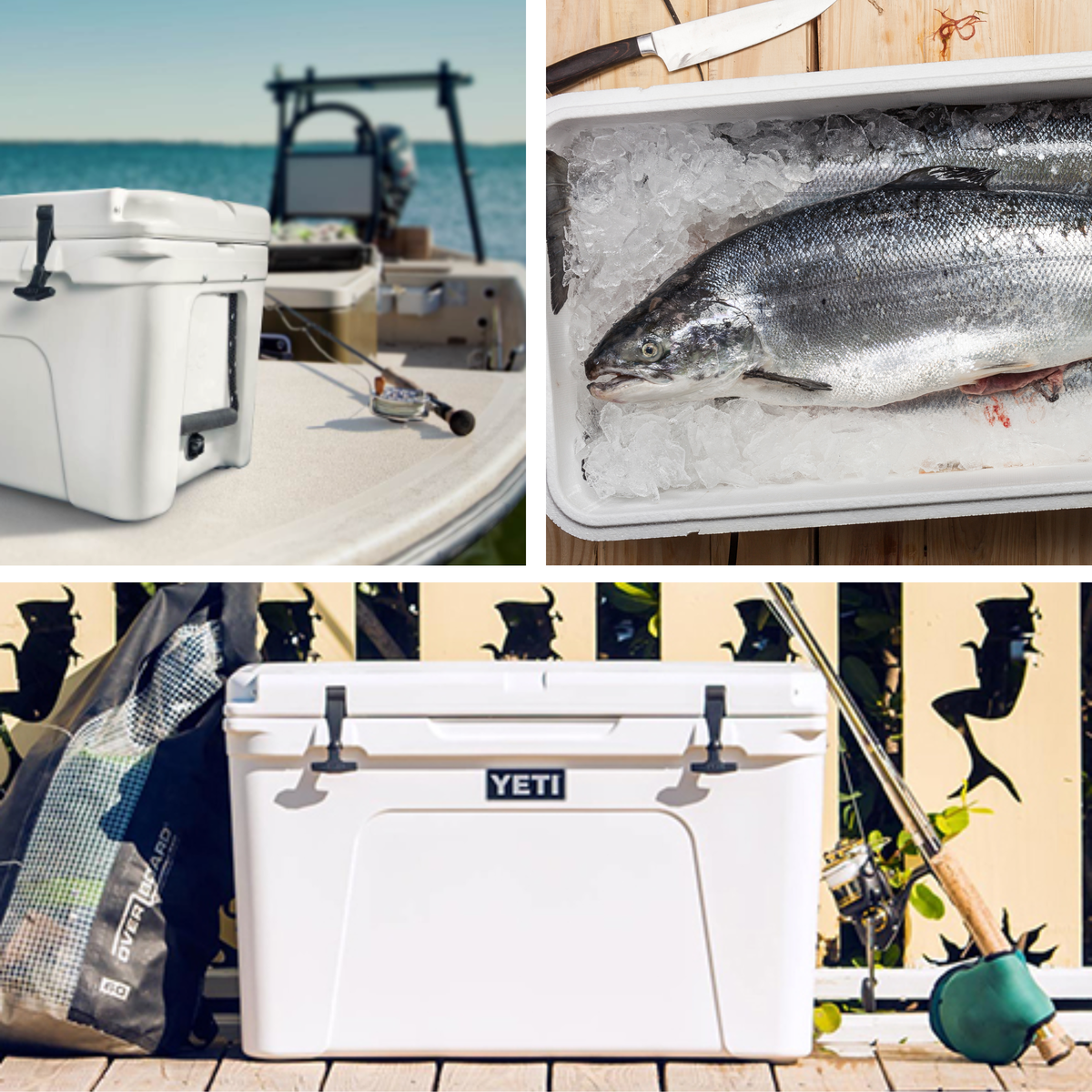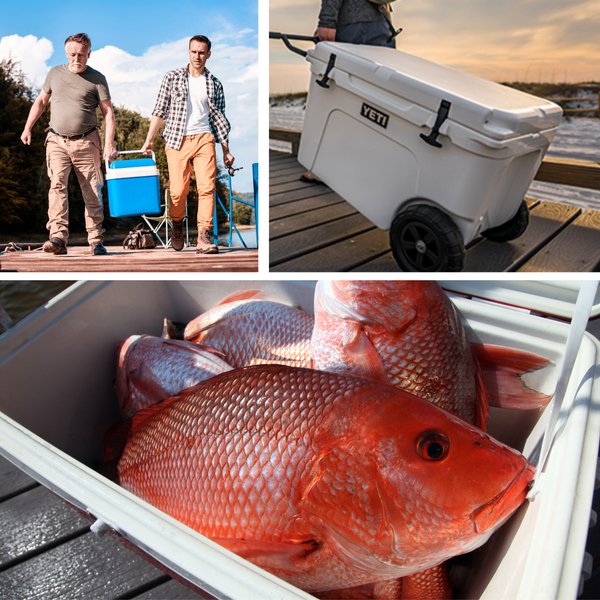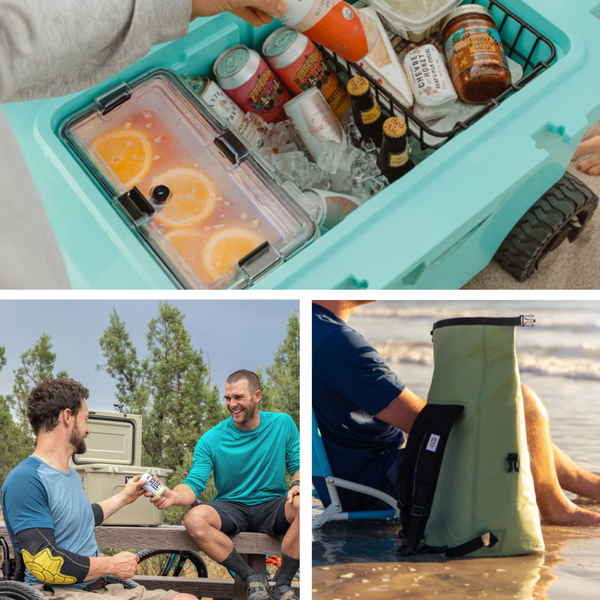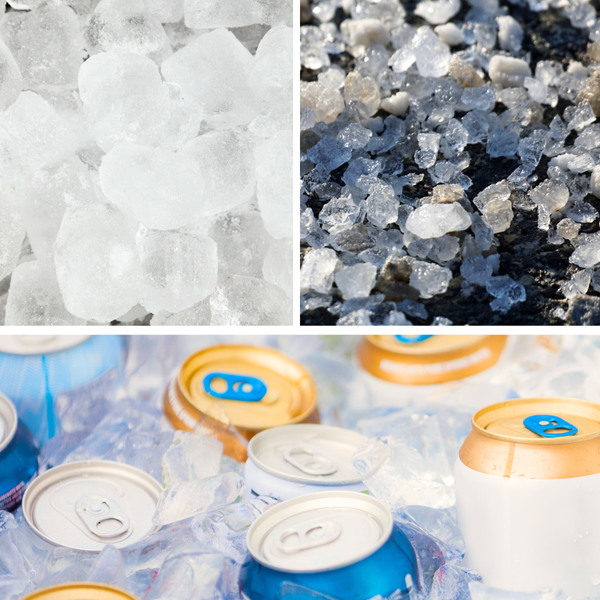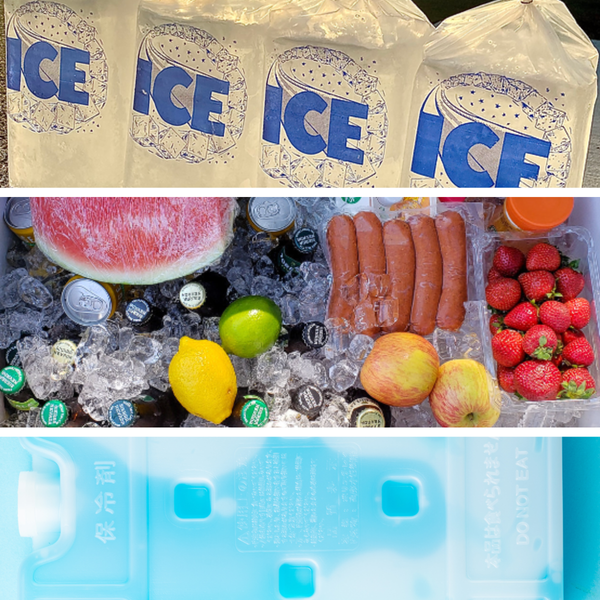Key Takeaways:
- Essential Gear: Understanding why a cooler is crucial for both the freshness of your catch and your overall fishing experience.
- Choosing the Right Cooler: Insights into selecting the best cooler based on the type of fishing, duration, and personal needs.
- Maintaining Your Cooler: Tips on how to effectively use and maintain your cooler to maximize ice retention and ensure durability.
Fishing is not just about casting a line and hoping for the best; it involves preparation and the right equipment to ensure a successful and enjoyable experience. One piece of equipment that often raises questions is the cooler. Do you really need one for fishing? The answer is a resounding yes, and here’s why.
Why a Cooler is Essential for Fishing
When you head out for a day of fishing, whether off the shore or from a boat, keeping your catch fresh is paramount. A cooler isn't just a container; it's a critical tool that serves multiple purposes. Firstly, it helps in preserving the quality of fish fillets by keeping them at a low temperature, slowing down the decomposition process. This is vital, especially if you plan to eat your catch or sell it.
Moreover, a cooler filled with ice packs or dry ice can maintain the necessary cold environment to prevent the fishy smell and taste from setting in, which can affect the overall quality of the fish. The cooler walls act as insulation, keeping the heat out and the cold in, which is essential during long fishing trips in the summer heat.

Selecting the Right Cooler for Your Fishing Trip
Choosing the best cooler for your fishing needs depends on several factors. If you're planning short trips or have limited space, a smaller cooler might be sufficient. These are easier to carry and can fit conveniently in tight spaces. For those who venture out for longer periods or catch larger fish, a hard-sided cooler might be the ideal option. These coolers typically offer better ice retention and are more durable.
Soft-sided coolers are a great option for those who prioritize portability and don't require long-term cooling. They are lighter and often come with additional pockets for storing gear like live bait or snacks. However, for ice fishing or extended trips, you might want to consider a cooler that can hold more ice or even dry ice for better freezing capabilities.
Practical Usage of Coolers on Fishing Trips
When packing your cooler, it's not just about throwing in some ice and your catch. Proper packing can significantly enhance ice retention. Pre-chill your cooler before filling it with bagged ice or ice packs. This step ensures that the internal temperature of the cooler is already low before you add your catch and ice, which helps in maintaining the cold for longer periods.
It's also important to consider what else you're bringing along. If you plan to store food and drinks in the same cooler, use separate ice packs for the beverages and fish to prevent cross-contamination. For drinks and snacks, a secondary, smaller cooler could be a more hygienic choice, keeping your main cooler strictly for the catch.

Innovative Cooler Features for Anglers
When selecting a cooler for your fishing expeditions, considering the innovative features that some models offer can greatly enhance your experience. Soft sided coolers, for instance, are increasingly popular among anglers for their lightweight and easy-to-carry design. Many of these coolers come with advanced insulation technology that keeps fish fresh and ice packs frozen for long periods, which is crucial when you're out in the sun all day. Additionally, features like waterproof pockets and UV-resistant exteriors make them even more suitable for the harsh marine environment.
Moreover, hard sided coolers are valued for their durability and ability to withstand rough handling, which often happens on fishing trips. These coolers typically feature robust latches and thick, insulated walls that not only keep your catch cold but also protect it from external impacts. Some high-end models even include built-in fish scales and cutting boards, making them an all-in-one solution for storing and preparing your caught fish. These features, while adding to the cost, offer significant value in terms of convenience and functionality, making them a worthwhile investment for serious anglers.
Soft-Sided vs. Hard-Sided Coolers: Which is Best for Fishing?
When choosing between a soft-sided cooler and a hard-sided cooler for your fishing trips, consider your specific needs and the nature of the trip. Soft-sided coolers are typically lighter and more portable, making them ideal for short trips or when you need to move frequently between spots. They can fit easily in a car and are perfect for individuals or small groups. However, they might not offer the same level of insulation as their hard-sided counterparts, which could be a deciding factor if you're planning to keep fish fresh for extended periods.
On the other hand, hard-sided coolers are the go-to for most people who require durability and superior ice retention. These coolers are built to withstand rough handling, which is often inevitable on fishing trips. They can maintain cold water and ice for several days, making them suitable for longer excursions or larger catches. Although they might come at a higher price, their long-term use and ability to keep your catch fresh justify the investment. Additionally, many hard-sided coolers come with special features like built-in cup holders or fish rulers, enhancing their utility on fishing trips.

How to Use Ice Packs Effectively in Your Fishing Cooler
Using ice packs in your cooler is a fine art that can significantly enhance the freshness of your catch. Unlike regular ice, ice packs do not break down into water, which can be beneficial in keeping the cooler's contents dry and intact. For optimal use, freeze your ice packs long before your trip to ensure they're solidly frozen. Layering these packs at the bottom and top of your cooler can create a stable, cold environment that helps your bait and catch stay alive and fresh throughout the day.
Moreover, consider the type of bag or container you use with your ice packs. Plastic bags are a common choice, but ensure they are durable and do not easily tear or break. Some anglers prefer to use specialized cooler bags designed to work with ice packs, maximizing efficiency. These bags often come at a reasonable price and offer good insulation, making them a practical choice for both lunch and your fishing needs. Remember, the goal is to maintain a consistent cold temperature without the mess of melting ice, ensuring that your fishing trip is as successful and enjoyable as possible.
Cooler Packing Strategies for Optimal Freshness
Packing your cooler correctly is just as important as the type of cooler you choose. To keep your cooler contents cold and fish fresh for extended periods, start by pre-chilling your cooler before adding your items. This can be done by putting a few ice packs or bags of ice in the cooler a few hours before your trip. Once chilled, strategically place frozen goods at the bottom, as they will stay frozen longer and help keep the temperature inside the cooler low. Over this, layer your fresh catch or meat, ensuring that it's wrapped securely to avoid water from melting ice contaminating it.
For additional cooling efficiency, consider using a combination of ice packs and loose ice. Ice packs are great for maintaining a consistent temperature, while loose ice can fill any gaps, ensuring that cold air circulates evenly throughout the cooler. Remember to drain the water from melted ice periodically to prevent the cooler contents from sitting in warm water, which can accelerate spoilage. With these strategies, your cooler will function more effectively, keeping your catch fresh and safe to consume even after long hours on the water.

Maintaining and Cleaning Your Cooler
After each use, cleaning your cooler is crucial to prevent odors and maintain hygiene. Drain out any remaining water and wipe the interior with a solution of baking soda and water to tackle any residual fishy smell. Allow the cooler to dry completely before storing it to prevent mold and mildew buildup.
Regular maintenance of the cooler’s hardware, like checking the seals and hinges, is also important. These components are crucial for maintaining the cooler’s efficiency and ensuring that the lid closes tightly, keeping the cold air in and the warm air out.
The Role of Coolers in Different Types of Fishing
Whether you are shore fishing, boat fishing, or ice fishing, the type of cooler you choose can have a significant impact on your experience. For boat fishing, where space might be limited, choosing a cooler that fits well while offering enough capacity is key. In contrast, for shore fishing, a cooler with wheels might be more practical for easy transport across potentially uneven terrain.
Ice fishing requires coolers that can withstand extremely low temperatures without the material becoming brittle and breaking. In these conditions, investing in a high-quality, durable cooler can save space and money in the long term.

Cost-Effectiveness and Long-Term Use
Investing in a good quality cooler might seem like a significant upfront cost, but it pays off in the long run. High-quality coolers are more durable and offer better ice retention, which is crucial for keeping your catch fresh for longer. They can also double as an extra seat or a sturdy surface for cutting bait or filleting fish, making them a versatile addition to your fishing gear.
Summary
A cooler is undoubtedly an essential piece of equipment for any fishing trip. It not only keeps your catch fresh but also enhances your overall fishing experience by allowing you to store food, drinks, and live bait efficiently. Choosing the right cooler, packing it properly, and maintaining it well are key steps to maximizing its benefits. With the right cooler, you can ensure that your catch stays fresh and your fishing trips remain enjoyable and successful.
FAQ
Q: Can I use just any cooler for fishing?
A: While any cooler can temporarily store your catch, fishing coolers are specifically designed with features like better insulation and durability, which are crucial for keeping your catch fresh, especially during long trips or in hot weather.
Q: How often should I clean my fishing cooler?
A: It's best to clean your cooler after every use to prevent odors and maintain hygiene. Regular cleaning also extends the life of your cooler by preventing mold and mildew buildup.
Q: Is it worth investing in an expensive cooler for occasional fishing trips?
A: If you fish occasionally, a reasonably priced cooler might suffice. However, ensure it has adequate ice retention capabilities and space for your typical catch size. For more frequent trips, investing in a higher-quality cooler can be more cost-effective in the long run.



